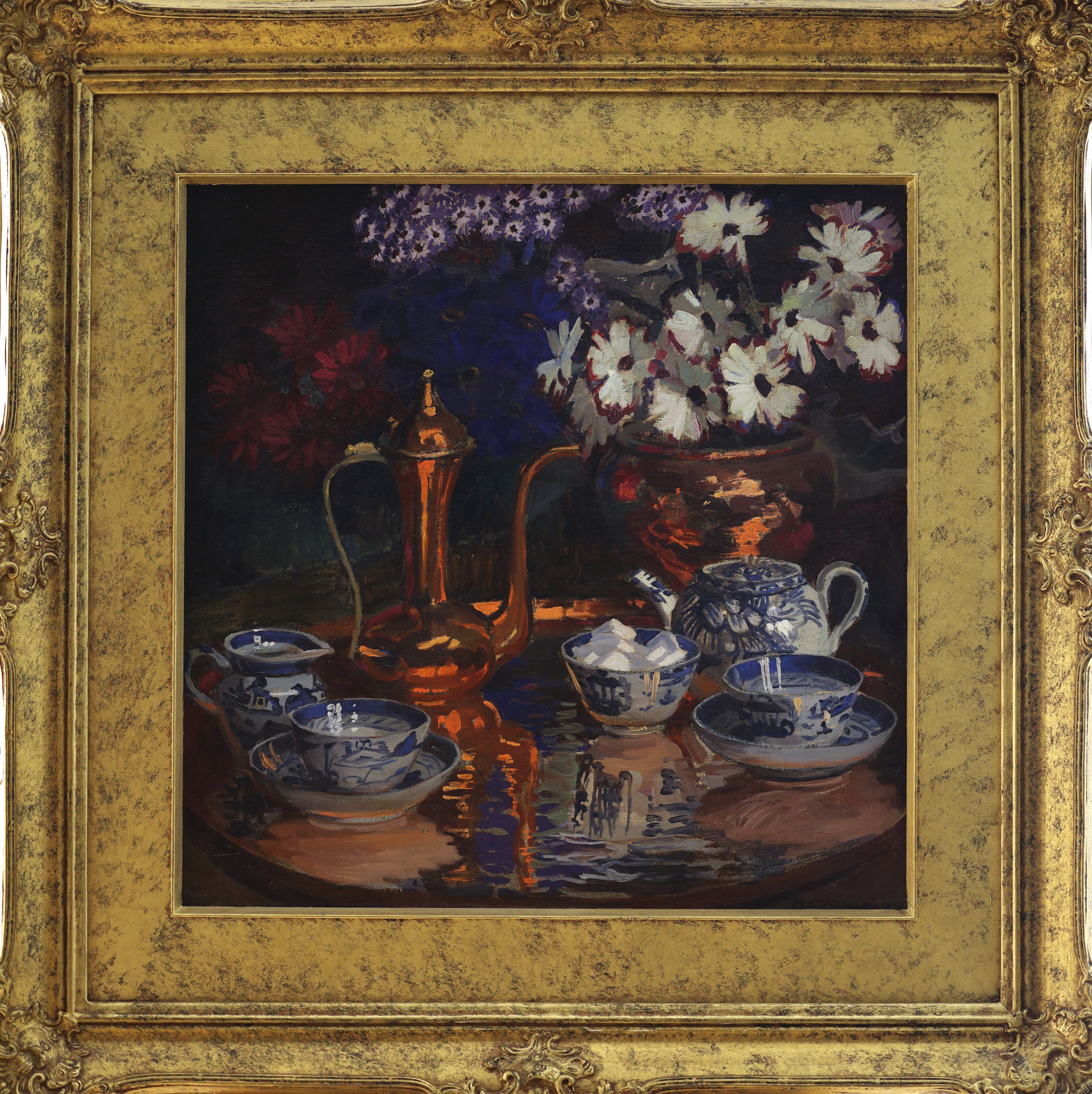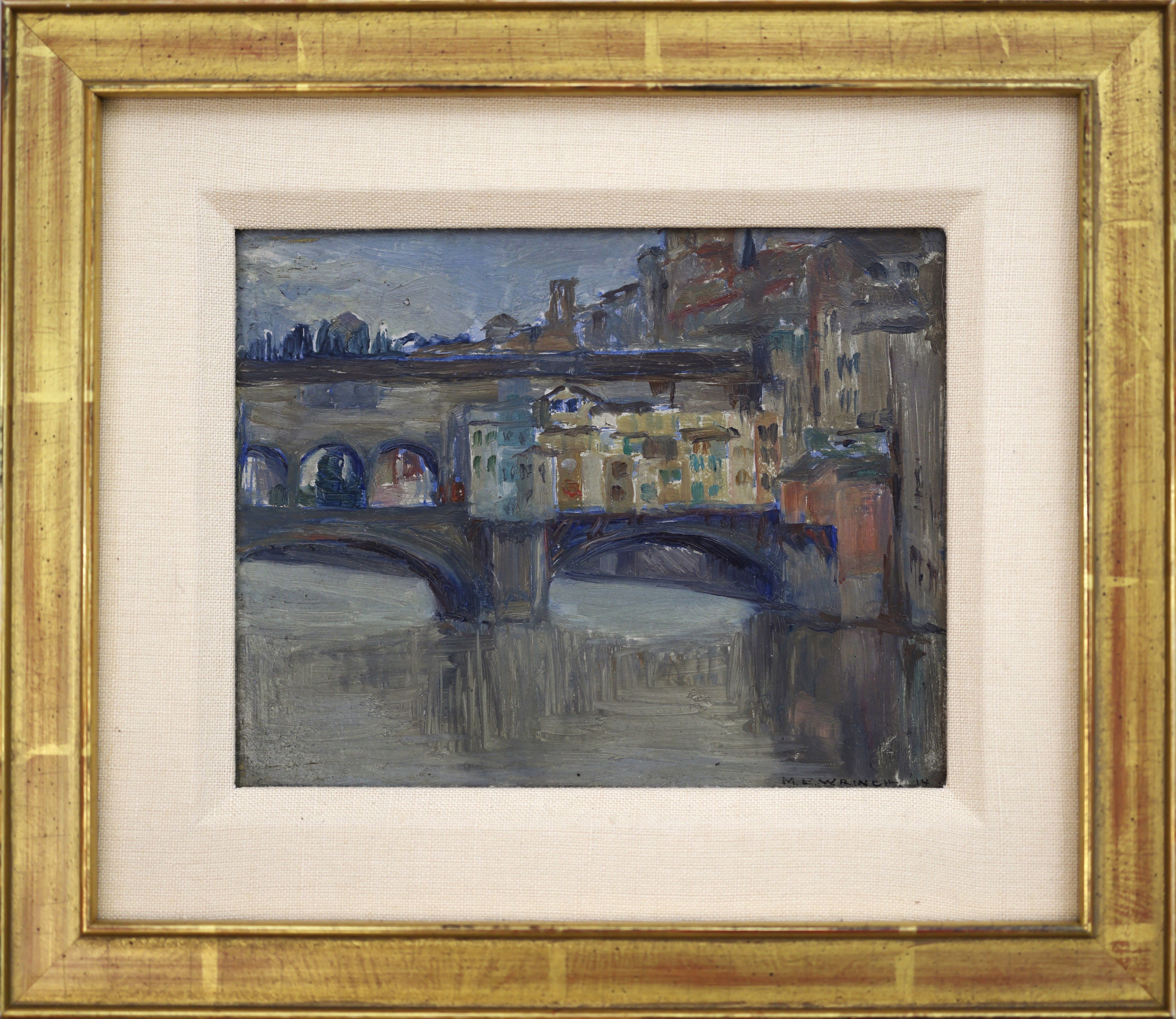Mary Evelyn Wrinch (1877 – September 19, 1969): Pioneering Canadian Artist
Mary Wrinch was a prominent Canadian artist known for her miniature paintings, oil paintings, and block prints, often inspired by the Northern Ontario landscape. She was a trailblazer of the 'Canadian style', capturing the bold colours of the Algoma, Muskoka, and Lake Superior regions in situ. Her miniature paintings on ivory were noted for their freshness and vitality, and her colour block prints are considered virtuoso examples of the medium.
Early Life and Education: Born in Kirby-le-Soken, Essex, England, Wrinch emigrated to Canada with her mother at the age of eight following her father's death. They settled first in Bronte, Ontario, and later in Toronto. She attended Bishop Strachan School, a private school in Toronto, and later studied at the Central Ontario School of Art (now OCAD University), where she was taught by notable artists such as George Agnew Reid, Laura Muntz, and Robert Holmes. Wrinch continued her studies at the Grosvenor School of Modern Art in London under Walter Donne, and later at the Art Students’ League in New York with Alice Beckington.

Mary Evelyn Wrinch; Cineraria
Career Highlights: Wrinch began her artistic career as a painter of miniatures on ivory before transitioning to landscape painting around 1906. A pivotal moment came during a visit to Muskoka, where she painted Saw Mill, Muskoka, which led to further exploration of the Canadian landscape. By 1928, she was producing colour linoleum block prints, a medium for which she became highly regarded. She served as the Art Director at Bishop Strachan School from 1901 to 1936, designing the school's chapel interior, including a large stained-glass window.
Throughout her career, Wrinch was an active member of several art organizations, including the Royal Canadian Academy of Arts, Ontario Society of Artists, Heliconian Club, Women's Art Association of Canada, Canadian Society of Painters in Watercolour, American Society of Miniature Painters, Canadian Handicrafts Guild, and the Canadian Society of Graphic Art. Her work was exhibited at major exhibitions such as the 1924 British Empire Exhibition in Wembley, London, and A Century of Canadian Art at the Tate Gallery in 1938.
Artistic Legacy: Wrinch's work spanned various mediums, including oil paint, watercolour, drawing, and printmaking, with her linoleum block style prints being particularly notable. Her most famous works include Breaking Clouds (1931–1932) and Scarboro (1935–1938), both housed in the National Gallery of Canada. Her paintings are also part of collections at the Art Gallery of Ontario, Museum London, Montreal Museum of Fine Arts, and the Robert McLaughlin Gallery.

Mary Evelyn Wrinch; Ponte Vecchio, Venice
Personal Life: In 1922, Wrinch married her former teacher and Toronto-based mural painter, George Agnew Reid, following the death of his first wife, Mary Hiester Reid. The couple resided in the Wychwood Park area of Toronto, an arts and crafts community. They frequently sketched together in various regions, including Algoma, Temagami, Bruce Peninsula, and the Ottawa Valley. After 25 years of marriage, George Agnew Reid passed away in 1947. Mary Wrinch continued her artistic pursuits until she ended her career in 1944. She passed away in Toronto in 1969 at the age of 90.
Exhibitions and Recognition: Wrinch's work received significant recognition during her lifetime and posthumously. Her first commercial exhibition was at The Art Metropole in Toronto in 1966. Her first public exhibition was held in 1969 at the Art Gallery of Ontario. In 2020, the AGO showcased her miniature portraits and landscape prints in an exhibition titled Mary Wrinch: Painted from Life.
Mary Wrinch remains a celebrated figure in Canadian art history, with curators praising her innovative techniques, distinct vision, and the high-key colours and open brushwork of her paintings. Her legacy endures through her contributions to Canadian art and her influence on future generations of artists.


